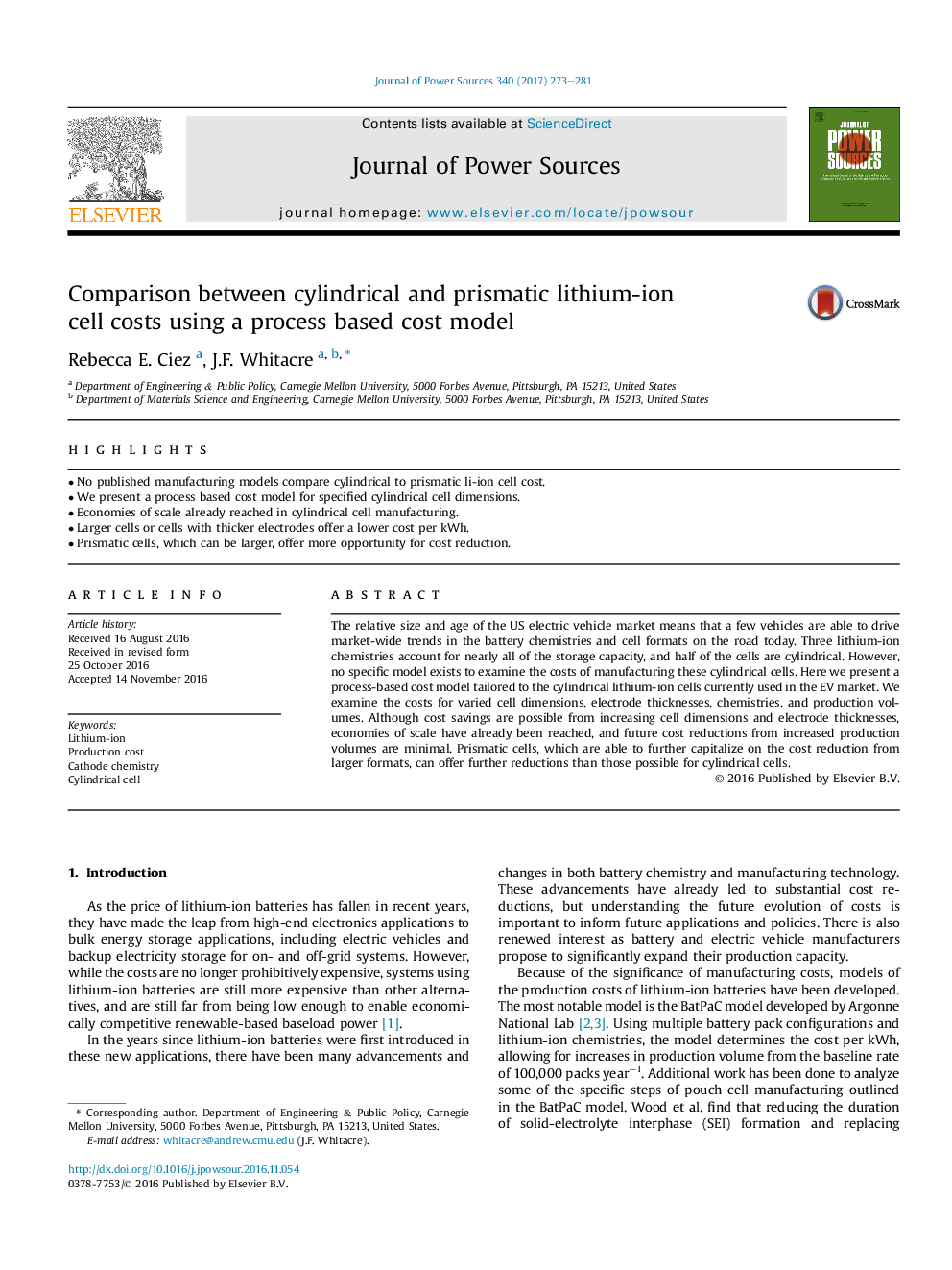| Article ID | Journal | Published Year | Pages | File Type |
|---|---|---|---|---|
| 5149831 | Journal of Power Sources | 2017 | 9 Pages |
Abstract
The relative size and age of the US electric vehicle market means that a few vehicles are able to drive market-wide trends in the battery chemistries and cell formats on the road today. Three lithium-ion chemistries account for nearly all of the storage capacity, and half of the cells are cylindrical. However, no specific model exists to examine the costs of manufacturing these cylindrical cells. Here we present a process-based cost model tailored to the cylindrical lithium-ion cells currently used in the EV market. We examine the costs for varied cell dimensions, electrode thicknesses, chemistries, and production volumes. Although cost savings are possible from increasing cell dimensions and electrode thicknesses, economies of scale have already been reached, and future cost reductions from increased production volumes are minimal. Prismatic cells, which are able to further capitalize on the cost reduction from larger formats, can offer further reductions than those possible for cylindrical cells.
Related Topics
Physical Sciences and Engineering
Chemistry
Electrochemistry
Authors
Rebecca E. Ciez, J.F. Whitacre,
